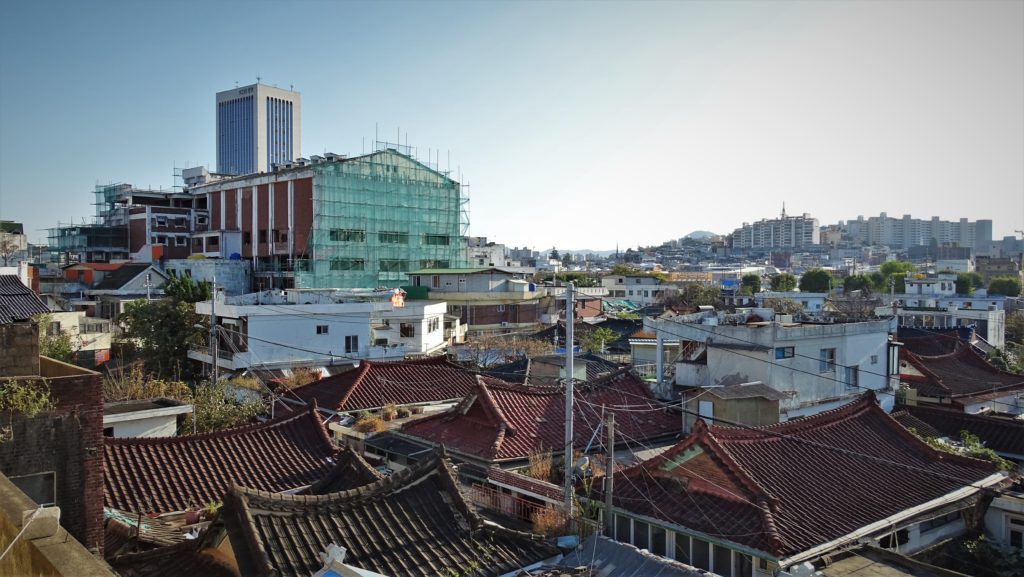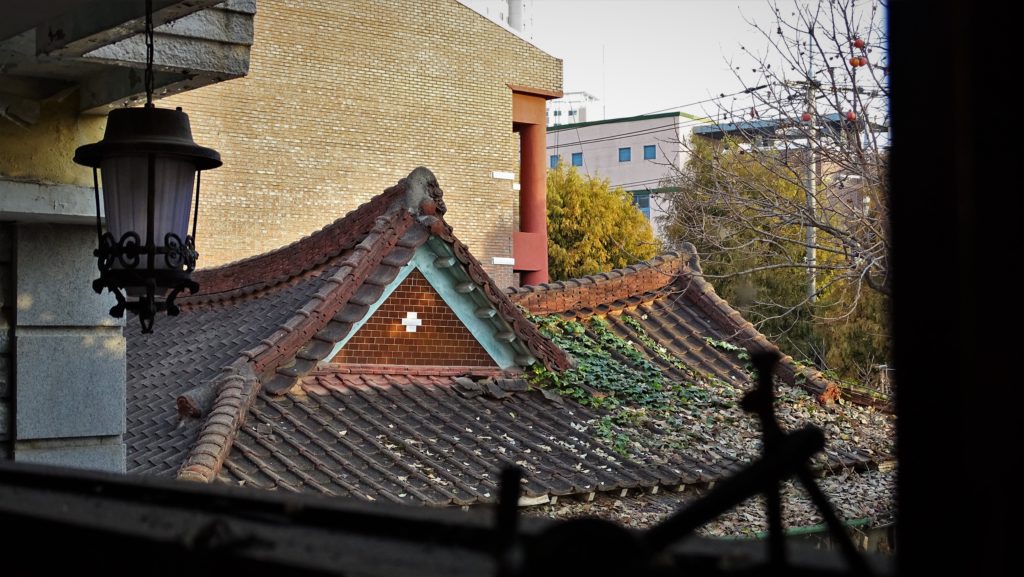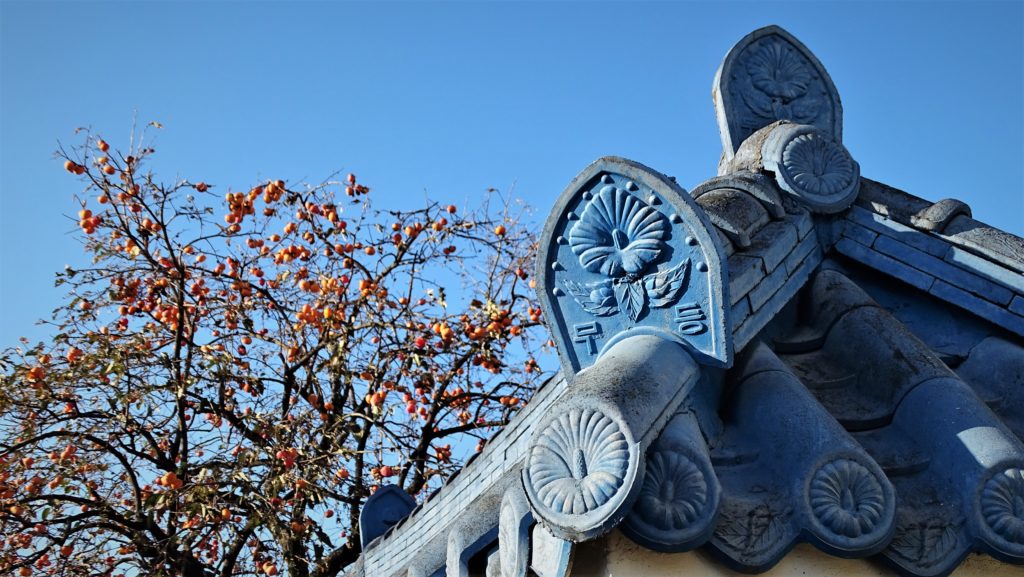Neighborhoods Rallying Before Death
Written and photographed by Isaiah Winters.
Every year in Korea, autumn foliage treats us to one last gasp of life before the bleak onset of winter. I can’t help but liken this to cases of terminal lucidity, when patients on their deathbeds regain a fleeting clarity of expression before suddenly passing away. In much the same way, Gwangju’s old neighborhoods sometimes rally before death, affording ephemeral vignettes of living history to anyone who cares to notice. Recently, I’ve noticed a few local neighborhoods exuding gleams of terminal beauty and charm in the face of redevelopment. In this article, I’ll share with you some of this final rallying which, like the autumn foliage, will likely be gone by the time this issue of the Gwangju News goes to print.
The aged and depleted alleys of Yu-dong are a poignant place to start our journey. Located alongside the Gwangju Stream (catty-corner to Yangdong Market), the empty homes of recently evicted tenants are now being stripped of any remaining value, mostly in the form of scrap metal. To the best of my knowledge, Yu-dong is one of only three remaining high-density refuges of traditional, hanok-style sweeping roofs in the city. Once it and the gutted remnants of Gyerim-dong are razed, Yangsam-dong (located directly across the stream from Yu-dong) will be the last place in Gwangju to see an authentic clutch of tiles, timber frames, and upturned eaves that, architecturally speaking, leave no doubt as to where in the world you are.

For my money, the most beautiful vestige still in Yu-dong is the old Journey Inn (여로 여인숙), which used to provide humble accommodations and meals for travelers, vagrants, and those on the lam decades ago. Just beyond its beautiful, brick-red doors is a gabled frieze featuring a white flower flanked by two peacocks upon charcoal-gray stucco. Draped with lush strands of red berries, the inn’s timeworn facade is framed with wooden beams the color of rust. Beyond its quaint aesthetics, the old inn, which was likely named after the famous Journey TV drama from the early 1970s, was also notable for serving ostrich meat as its main dish. When Journey Inn was last in operation, a single portion of raw ostrich meat cost only 3,000 won. What a cool place it must have been in its heyday.

Moving on to Gyerim-dong, there’s a neighborhood located just south of Seobang Market where the last vestiges of the area’s hanok-style houses are being bulldozed today. The condition of both the market and the neighborhood have been written about in the Gwangju News before, but with redevelopment expanding into the area’s few untouched quarters, an update seems appropriate. Under siege for the sake of new high-rise apartments, the area has been patrolled by security guards somewhat more aggressively than other areas of Gwangju that I’m familiar with. A friend of mine got searched there by two black-clad rent-a-cops on scooters for merely taking photos in the area. When taking my own photos there on repeat visits, I had to play a game of cat and mouse with security to avoid any similar run-ins.
During my visits, one home in particular caught my attention for its seclusion and unique design. Walled-off behind two high gates and nestled beneath a throng of taller structures, it’d always seemed inaccessible and so was the last home breeched before this article’s submission deadline. (As it turns out, both gates had been left unlocked, likely by the wrecking crew, so there was no difficulty in entering.) The impressive wooden gate stood some eight feet high with a heavy sliding latch on the inside, along with a more convenient side door likely used on a quotidian basis. Beyond this gate stood a beautiful home with numerous hanok influences, including exposed lacquer-finished beams, sliding lattice doors, and a beautifully preserved tiled roof with flying eaves. It was undoubtedly the neighborhood’s finest home at one point.

Adding to its mystique, the home was also filled to the rafters with clues as to who its owner was. Among the most prominent clues were awards for four decades of university-level teaching and textbooks on both molecular-orbital theory and quantitative inorganic analysis. An even clearer image emerged after a stack of business cards surfaced – one side in English and the other entirely in hanja (Chinese characters). After reaching out to a local scholar (and dear friend) with a vast social network, it turned out that the home belonged to a certain professor emeritus of chemistry at Chonnam National University who taught there from the university’s very beginning in 1952 until at least 1987. Imagine that – teaching chemistry at the same institution through the Korean War, the 5.18 Democratic Uprising, and the democratic reforms brought about by the June Struggle. The country’s metamorphosis must’ve been staggering.

The last gasp of Gyerim-dong has been fairly vociferous, with locals putting up banners that mince no words as to what’s been plaguing their neighborhood. Their messages include claims such as “Robbed without a knife – how dare you offer only half compensation,” “Redevelopment in sheep’s clothing,” and “We’ve saved our whole lives for our property.” At the bottom of each banner is the coda “Compensate at the current market rate!” Of course, I have no idea what kind of buyout was really offered to local residents, but it’s clear many left their homes feeling cheated. The wreckers, excavators, and hazmat crews are making short work of the neighborhood anyway, as now very few of the area’s oldest homes remain. By contrast, the streamside residents of Yu-dong seem to have put up no such fight, possibly because they were evicted on better terms.

One of the last residents to be forced out of Gyerim-dong was an old retiree who lived in a corner house and collected scraps of cardboard to supplement his pension. I asked him what he thought of the redevelopment about to tear through his street. Looking out over the similarly hard-up laborers in hazmat suits ripping down asbestos, he shrugged his shoulders and got back to work. Two weeks later, his home stood vacant with the windows smashed out. And just like that, all the color drained from the façade.
The Author
Originally from Southern California, Isaiah Winters is a Gwangju-based urban explorer who enjoys writing about the City of Light’s lesser-known quarters. When he’s not roaming the streets and writing about his experiences, he’s usually working or fulfilling his duties as the Gwangju News’ heavily caffeinated chief proofreader.







